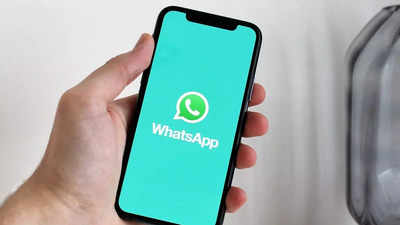On a routine Saturday evening, WhatsApp, one of the world’s leading messaging applications, found itself at the center of a substantial global outage, leaving users struggling to send messages across its platforms. The incident, which garnered significant attention online, highlighted how deeply embedded the app is in daily communication for billions.
Reports of the outage began emerging from various regions, including India, the United States, and other parts of the globe. According to Downdetector, an outage tracking website, there were approximately 3,000 incident reports from India alone, with over 90% related to issues in sending messages. The widespread nature of the problem drew attention on social media, prompting users to turn to platforms such as Twitter and X to express their frustration and confusion, sharing memes and messages that echoed a universal sentiment: “Is WhatsApp down?”
The Initial Outage — What Happened?
The outage began when users were suddenly unable to send messages or connect via WhatsApp’s web and mobile applications. Observers noted a concentrated spike in complaints around 20:10 PM IST, with Downdetector reporting a sharp rise in service disruption reports. A significant 91% of these reports indicated problems specifically related to sending messages, while other users reported issues including app crashes and connection errors.
Affected users were unable to communicate effectively, leading to a spike in online commentary. Tweets flooded social media platforms as people sought validation of their experiences; they queried fellow users if they too were facing similar issues, leading to a remarkable online discourse surrounding the outage. As one user tweeted, “Cannot send messages in ANY GROUP chat,” while another lamented, “I have been trying to upload the status but it couldn’t.
Understanding the Impact
Evaluating the full impact of the outage requires understanding the significance of WhatsApp in global communications. With over two billion users, WhatsApp is crucial not just for personal messaging, but also for business communications and information dissemination. Therefore, when service disruptions occur, the ramifications can be extensive, affecting everything from local businesses to international enterprises.
In conjunction with this disruption, reports indicated that just prior to the WhatsApp trouble, there had also been a significant outage in India’s Unified Payments Interface (UPI), which facilitated online transactions. This double whammy left many users in a technological bind, unable to communicate or conduct financial business effectively.
Community Response to the Outage
As the outage persisted, WhatsApp users took to social media to express their frustrations through memes, jokes, and discussions. The hashtag #WhatsAppDown began to trend as users from various countries chimed in. It turned into a virtual town hall meeting, showcasing the global nature of the platform and the shared experience of relying on it for everyday communication.
While the outage primarily appears to be a technical issue, the resultant community reaction showcased the flurry of emotions that come into play when a key service like WhatsApp fails. Many users reminisced about the pre-WhatsApp era, while others humorously pointed out the unexpected silence that took over group chats.
Meta’s Response and Ongoing Developments
As of the latest reports from Downdetector and individual users, there has not been an official acknowledgment from Meta, the parent company of WhatsApp. Traditionally, during such outages, users expect a transparent and timely response from the company to provide clarity on the issue and reassurance that the problem is being actively resolved.
However, it is worth noting that WhatsApp has been known to roll out new updates and features regularly. Prior to the outage, innovations such as real-time online indicators for group chats, enhanced notification option management, and QR codes for channel admins had been highlighted. These features aim to enhance user experience and streamline communication on the app, but outages such as this one cast a shadow over those advancements.
What Users Can Expect Moving Forward
As WhatsApp works to restore full service, users are left to wonder how such a large disruption can occur and what steps the company will take to mitigate future issues. With numerous significant interruptions under its belt, WhatsApp’s ability to ensure stability is crucial for maintaining user trust. Immediate communication from Meta about the root cause of the disruption, along with any plans for improved system reliability would go a long way in re-establishing confidence among its user base.
In the age of instant communication, the ability to send messages or make calls without interruptions is becoming increasingly critical. Users want assurance that the channels they rely upon will remain consistent. After all, in a fast-paced digital world, services need to evolve not only in features but also in reliability.
Lessons Learned from the Outage
The recent WhatsApp outage serves as a reminder of several core lessons for both users and platform companies. First, technological dependence can lead to vulnerabilities; when one major application goes down, the cascading effects can disrupt an entire ecosystem of communication and commerce.
For companies like Meta, it is essential to invest in robust infrastructure capable of handling peak loads and potential failures. Increased transparency with users, particularly during outages, not only fosters trust but also helps mitigate frustrations during unforeseen circumstances.
Moreover, user education on alternative communication platforms can be invaluable. Though WhatsApp remains a leader in messaging, understanding how to pivot to other forms of communication—be it Telegram, Signal, or traditional SMS—can prove beneficial during future incidents.
Conclusion: WhatsApp’s Next Steps
In conclusion, as users await confirmation of the outage resolution, the incident has sparked critical discussions around technology reliability and user experience. WhatsApp’s response and future updates will not only dictate user satisfaction but also determine how well the company can regain the confidence of its vast user base. Until then, the hashtag #WhatsAppDown may become a memorable social media phenomenon emblematic of our reliance on digital communication.
Have patience, and check for official updates from WhatsApp. Outages are a part of the digital ecosystem but expect accountability and improvements going forward.
Through this experience, users have been reminded of the fragility of online services that have become integral parts of daily life.

